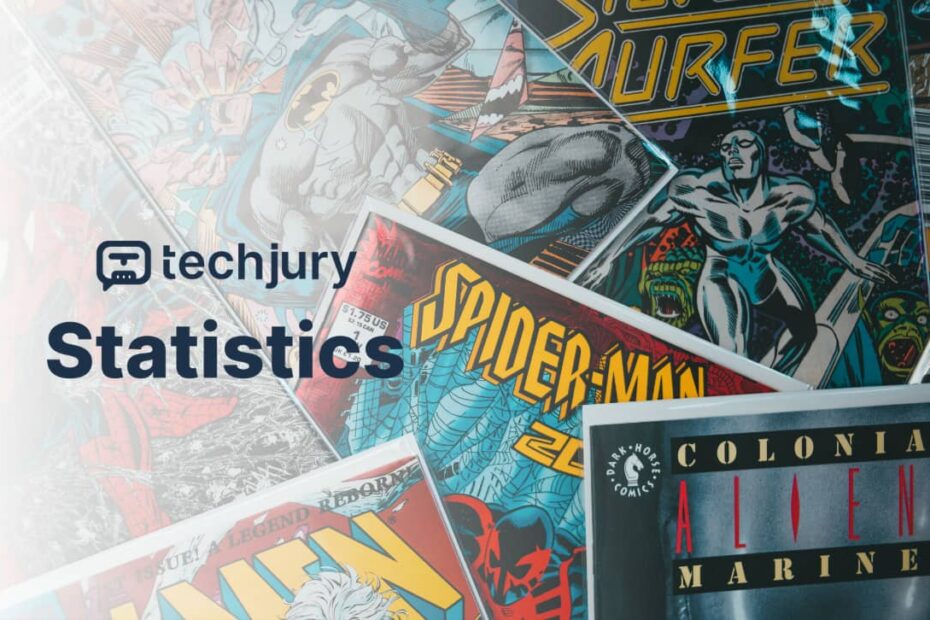The Fascinating World of Comic Book Economics: More Than Just Colorful Pages
When you think about comic books, what comes to mind? Probably vibrant superheroes, epic storylines, and childhood memories. But beneath those colorful panels lies a complex, dynamic economic ecosystem that‘s far more sophisticated than most people realize.
As a data analysis specialist who has spent years studying niche collectible markets, I‘ve discovered that comic books represent a fascinating intersection of pop culture, art, technology, and investment. This isn‘t just a hobby—it‘s a multi-billion dollar industry with intricate market dynamics that would surprise even seasoned collectors.
The Market‘s Hidden Complexity
The comic book market isn‘t a simple, linear marketplace. It‘s a sophisticated ecosystem driven by multiple interconnected factors: cultural relevance, artistic merit, character popularity, historical significance, and technological transformation. Each comic book isn‘t just a piece of paper—it‘s a potential financial asset with a unique value proposition.
Historical Context: From Pulp to Profit
The Origins of a Collectible Market
Comic books emerged in the 1930s as inexpensive entertainment, printed on cheap pulp paper and sold for mere pennies. No one during those early days could have imagined that these disposable magazines would become multi-thousand-dollar collectibles decades later.
The market‘s evolution tells a remarkable story of cultural transformation. What began as children‘s entertainment gradually became a serious collector‘s domain, with rare issues fetching astronomical prices at international auctions.
Milestone Moments in Comic Book Valuation
Several pivotal moments dramatically reshaped the comic book market‘s perception:
- The first appearance of Superman in Action Comics #1 (1938)
- Marvel‘s revolutionary character introductions in the 1960s
- The speculative boom of the 1990s
- The rise of superhero cinema in the 2000s
Each of these moments didn‘t just change comic book values—they fundamentally restructured the entire collecting ecosystem.
Market Size and Economic Significance
Global Market Overview
According to comprehensive research, the global comic book market has experienced remarkable growth. In 2022, the market was valued at approximately [~7.79 billion USD], with projections indicating potential expansion to [~17.52 billion USD] by 2030.
This represents a compound annual growth rate of roughly 10.5%—a figure that outpaces many traditional investment sectors. For context, this growth rate is significantly higher than many mainstream entertainment and collectible markets.
Regional Market Variations
While North America remains the largest market, international regions are showing fascinating divergences:
- United States: Dominated by Marvel and DC, representing traditional superhero narratives
- Japan: Manga market worth approximately [~530 million USD], with different aesthetic and storytelling approaches
- European Markets: Growing interest in graphic novels and alternative comic styles
Collector Demographics: Who‘s Buying?
Shifting Collector Profiles
Traditional assumptions about comic book collectors are rapidly becoming outdated. While historical data suggested a predominantly male, young demographic, contemporary research reveals a much more nuanced picture.
Current statistics indicate:
- 63% of comic purchases are still made by men
- Primary age group: 13-29 years old
- Racial composition: 71% white, 13% Latino, 14% Black, 5% Asian
However, these numbers are dynamically changing. Increased representation, diverse storytelling, and broader cultural acceptance are gradually transforming the collector landscape.
Investment and Authentication: The Technical Side
Valuation Methodologies
Comic book valuation is a complex process involving multiple assessment criteria:
- Physical Condition
- Historical Significance
- Character Introduction
- Rarity
- Cultural Impact
Professional grading services like CGC (Certified Guaranty Company) have standardized assessment techniques, providing collectors with reliable valuation metrics.
Authentication Technologies
Modern authentication goes far beyond visual inspection. Advanced technologies now include:
- Spectral analysis of paper composition
- Microscopic ink examination
- Digital provenance tracking
- Blockchain-based ownership verification
These technologies have dramatically reduced fraud and increased market transparency.
Technological Transformation of Collecting
Digital Disruption
The comic book market isn‘t immune to digital transformation. Digital comic sales increased by [~750 million USD] in 2020, signaling a significant shift in consumption patterns.
Emerging platforms are creating hybrid collecting experiences, blending physical and digital ownership models. Blockchain and NFT technologies are introducing entirely new dimensions to comic book collecting.
Future Projections and Market Trends
Emerging Collector Behaviors
Future collectors will likely prioritize:
- Diversity in storytelling
- Digital ownership options
- Investment potential
- Cultural significance
- Technological integration
The comic book market is no longer just about collecting—it‘s about participating in a dynamic, evolving cultural ecosystem.
Practical Advice for Aspiring Collectors
Strategic Collecting Approaches
- Research extensively
- Understand market trends
- Diversify your collection
- Focus on condition and rarity
- Consider long-term cultural significance
Conclusion: A Living, Breathing Market
The comic book market represents far more than a nostalgic hobby. It‘s a sophisticated, technology-driven ecosystem that reflects broader cultural and economic trends.
By understanding its complexities, you‘re not just collecting comics—you‘re participating in a vibrant, dynamic marketplace with endless possibilities.
Disclaimer: Market projections are based on current research and subject to change. Always conduct personal research before making significant investments.
